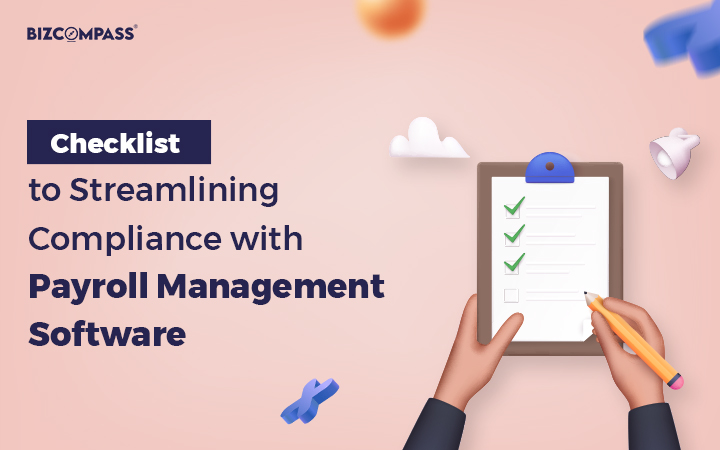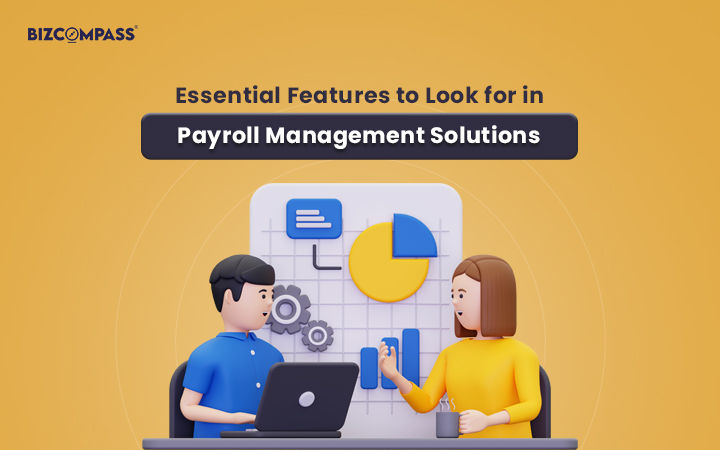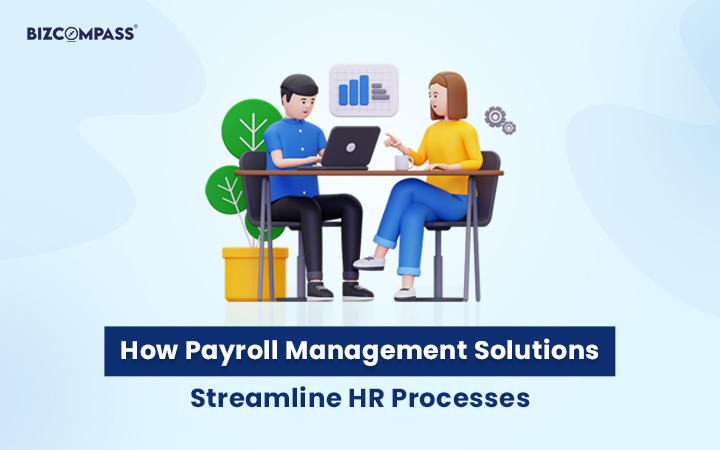Introduction
Payroll management software is a digital tool designed to streamline and automate the process of paying employees within an organization.
This software typically encompasses various functions such as calculating wages, withholding taxes, generating pay stubs, and distributing salaries.
It eliminates much of the manual effort involved in payroll processing, offering efficiency, accuracy, and convenience to businesses of all sizes.
Compliance is crucial in payroll processing to ensure adherence to legal and regulatory requirements governing employee compensation.
Various laws and regulations at the federal, state, and local levels dictate how employers must handle payroll matters, including minimum wage laws, overtime regulations, tax withholdings, and reporting obligations. Failing to comply with these regulations can result in penalties.
Therefore, maintaining compliance is paramount to avoid financial and reputational risks. The purpose of this checklist is to serve as a comprehensive guide for payroll administrators and HR professionals to ensure that all necessary steps are followed accurately and efficiently.
By systematically organizing and documenting key tasks, this checklist helps mitigate errors, reduce compliance risks, and enhance overall payroll management effectiveness.
It serves as a valuable tool for verifying that each payroll-related activity, from data collection and calculation to distribution and reporting, is executed following best practices.
Understanding Payroll Compliance
Payroll compliance encompasses adherence to a multitude of legal regulations and standards, including but not limited to the Fair Labor Standards Act (FLSA), which establishes minimum wage, overtime pay eligibility, recordkeeping, and child labor standards for employees in the private sector and federal, state, and local governments.
Additionally, tax laws at the federal, state, and local levels dictate requirements for income tax withholding, Social Security and Medicare taxes, unemployment taxes, and other payroll-related taxes. Employers must also comply with regulations concerning employee benefits, such as the Family and Medical Leave Act (FMLA) and the Affordable Care Act (ACA), which governs healthcare coverage and reporting obligations. Beyond general legal regulations, various industries have specific compliance requirements that impact payroll processing.
For instance, healthcare organizations must adhere to regulations such as the Health Insurance Portability and Accountability Act (HIPAA) for maintaining the confidentiality of employee health information. Construction companies may need to comply with prevailing wage laws that mandate specific minimum wage rates for construction projects funded by public entities.
Understanding and incorporating these industry-specific requirements into payroll practices is essential for ensuring compliance and avoiding potential legal repercussions.
The consequences of non-compliance with payroll regulations can be severe and multifaceted. Government agencies may impose financial penalties and fines for violations of wage and tax laws. In addition to monetary sanctions, non-compliance can result in legal actions, including lawsuits from employees or government entities.
Beyond direct financial repercussions, the organization's reputation may suffer due to negative publicity surrounding legal disputes or regulatory violations, leading to diminished trust among employees, customers, and stakeholders.
Therefore, maintaining payroll compliance is not only a legal requirement but also a critical aspect of protecting the organization's financial health and reputation.
Payroll compliance entails adherence to legal regulations and industry-specific requirements, with non-compliance carrying significant consequences ranging from financial penalties to reputational damage. Understanding these aspects is quite essential.
Components Of the Compliance Checklist
01 Secure Storage of Personal Information
Ensure that employee personal information, including social security numbers, addresses, and bank account details, is securely stored in compliance with data protection regulations.
Implement measures such as encryption, access controls, and regular security audits to safeguard sensitive data from unauthorized access or breaches.
02 Handling Sensitive Data Under Privacy Laws
Adhere to privacy laws such as the General Data Protection Regulation (GDPR) and the Health Insurance Portability and Accountability Act (HIPAA) when handling sensitive employee data.
Obtain explicit consent for data processing where required, limit access to sensitive information on a need-to-know basis and implement procedures for data deletion or anonymization when no longer needed for business purposes.
03 Ensuring Accurate Calculation of Wages and Overtime
Verify that wages, including regular pay rates, overtime rates, bonuses, and deductions, are accurately calculated for each pay period.
Use reliable payroll software or systems to perform calculations and ensure compliance with applicable regulations regarding overtime eligibility, calculation methods, and pay frequency.
04 Compliance with Minimum Wage Laws and Overtime Regulations
Ensure compliance with federal, state, and local minimum wage laws, as well as overtime regulations, to prevent violations and potential legal liabilities. Regularly review and update wage rates to reflect changes in minimum wage rates or overtime thresholds and accurately track and compensate non-exempt employees for hours worked beyond standard thresholds.
05 Withholding and Remitting Payroll Taxes
Deduct and withhold appropriate federal, state, and local income taxes, as well as Social Security and Medicare taxes, from employee wages in accordance with tax withholding tables and regulations. Ensure timely remittance of withheld taxes to the respective tax authorities to avoid penalties and interest charges for late payments.
06 Filing Tax Forms
Complete and file required tax forms accurately and timely, including Form W-2 for employees and Form 1099 for independent contractors. Verify that employee information, wage amounts, and tax withholdings reported on these forms are correct and consistent with payroll records. Submit them to the appropriate tax authorities by the deadlines specified by law.
07 Maintaining Accurate Records of Payroll Transactions
Keep comprehensive records of payroll transactions, including employee earnings, deductions, tax withholdings, and benefits contributions. Ensure that payroll records are accurate, complete, and accessible for inspection by auditors or government agencies as required by law.
08 Retention Periods for Various Payroll Documents
Adhere to retention periods prescribed by law or regulatory guidelines for retaining payroll records, such as employment tax records (e.g., Form W-4) for at least four years after the due date of the related tax return, and payroll-related documents (e.g., timecards, pay stubs) for at least three years from the end of the tax year they relate to.
09 Generating and Submitting Required Reports
Compile and submit required payroll reports accurately and timely, such as quarterly tax returns, annual tax returns, and year-end reports. Verify that the information reported on these forms is consistent with payroll records and meets regulatory requirements.
10 Compliance with Regulatory Reporting Standards
Comply with regulatory reporting standards applicable to specific industries or demographics, such as the Equal Employment Opportunity Commission reporting requirements for employers with 100 or more employees and the Affordable Care Act reporting obligations for applicable large employers. Ensure accuracy and timeliness in preparing and submitting these reports.
The compliance checklist encompasses essential components related to employee data management, wage and hour compliance, tax compliance, record-keeping, and reporting requirements. By diligently addressing each component, organizations can mitigate risks, ensure legal compliance, and uphold the integrity of their payroll process
Implementing The Checklist with Payroll Software
01 Selection of Compliant Payroll Management Software
When selecting payroll software, prioritize features that facilitate compliance with legal regulations and standards.
Look for software that offers robust security measures for protecting sensitive employee data, automated calculations for accurate wage and tax calculations, and built-in compliance checks to ensure adherence to minimum wage laws, overtime regulations, and tax requirements.
Consider software that provides customizable reporting capabilities to generate required reports efficiently. Evaluate the advantages and limitations of cloud-based and on-premises payroll solutions concerning compliance.
Cloud-based solutions offer accessibility, scalability, and automatic updates but require a thorough assessment of data security and compliance with privacy regulations. On the other hand, on-premises solutions provide greater control over data but may require significant investment in infrastructure and ongoing maintenance to ensure compliance with changes.
02 Customization and Configuration
Customize the payroll software to align with the specific compliance needs of the organization. Configure settings to accommodate industry-specific regulations, such as prevailing wage rates for construction projects or healthcare-related reporting requirements.
Customize fields and data entry forms to capture the information required for regulatory compliance, such as employee classifications for overtime eligibility.
Ensure accurate tax calculations and compliance by setting up tax profiles for employees based on their withholding allowances and filing status. Configure wage rates and overtime rules to reflect applicable federal, state, and local regulations.
Customize the software to accommodate additional compensation components, such as bonuses or commissions, while ensuring compliance with tax laws.
03 Training and Education
Provide comprehensive training to payroll administrators and HR personnel on using the payroll software for compliance purposes. Offer hands-on training sessions covering software functionality related to data entry, payroll processing, tax calculations, and reporting.
Emphasize the importance of accurately inputting data and following established procedures to maintain compliance. Keep employees informed about regulatory changes and updates relevant to payroll compliance. Offer ongoing education and training sessions to familiarize staff with new laws, regulations, and reporting requirements.
Encourage regular communication with payroll software vendors to stay informed about software updates or enhancements related to compliance features.
04 Integration with Other Systems
Ensure seamless integration between payroll software and other systems, such as HR and accounting software, to streamline data flow and enhance accuracy.
Integrate employee data, wage rates, and tax information between systems to eliminate duplicate data entry and minimize errors. Verify that integration protocols comply with data privacy regulations to safeguard employee information.
Implement data validation checks and reconciliation processes to ensure accurate data flow between payroll software and integrated systems.
Conduct periodic audits to verify data consistency and identify discrepancies that may impact compliance. Establish protocols for resolving data integration issues promptly to maintain compliance with regulatory reporting requirements.
05 Regular Auditing and Monitoring
Regularly conduct audits of payroll processes and data to identify discrepancies, errors, or instances of non-compliance. Audit procedures should include reviewing payroll records, conducting sample checks of calculations, and verifying compliance with applicable laws.
Promptly address any compliance issues identified during audits by investigating the root causes, implementing corrective actions, and updating policies or procedures as necessary.
Communicate findings to relevant stakeholders and take proactive measures to prevent the recurrence of issues—leverage software features for automated auditing and monitoring of payroll processes. Utilize built-in audit trails, exception reporting, and compliance alerts within payroll software to proactively identify anomalies or deviations from established procedures, enabling timely intervention and resolution.
06 Ensuring Data Security and Confidentiality
Implement robust security measures to safeguard payroll data against unauthorized access, breaches, or cyber threats. This includes encryption of sensitive data, access controls to restrict user permissions, and regular backups to prevent data loss.
Ensure compliance with data protection regulations such as the General Data Protection Regulation (GDPR) and the California Consumer Privacy Act (CCPA) when handling payroll data. Adhere to principles of data minimization, purpose limitation, and data subject rights to protect employee privacy and confidentiality.
Conduct regular security assessments and updates to identify vulnerabilities and mitigate risks to payroll data. Perform penetration testing, vulnerability scanning, and security audits to assess the effectiveness of security controls. Keep software systems and security protocols up-to-date to address emerging threats and vulnerabilities.
07 Collaboration with Legal and Compliance Experts
Seek legal advice from qualified professionals to interpret complex regulations and ensure an accurate understanding of legal requirements related to payroll compliance.
Legal experts can guide and interpret statutory provisions, regulatory guidelines, and case law relevant to payroll processing.
Collaborate with compliance experts, including HR specialists and industry consultants, to ensure adherence to industry-specific requirements and best practices.
Engage with professionals who have expertise in relevant regulatory frameworks and can provide insights into specific compliance challenges faced by the organization.
Conclusion
To conclude, compliance in payroll management is essential to ensure adherence to legal regulations, avoid penalties and fines, and uphold the integrity of employee compensation processes. The compliance checklist encompasses critical components such as employee data management, wage and hour compliance, tax compliance, record-keeping, reporting requirements, regular auditing, data security, and collaboration with compliance experts.
Continuous monitoring and adaptation to regulatory changes are crucial to ensure ongoing compliance with evolving laws and regulations governing payroll management.
Regular updates and adjustments to policies and procedures are necessary to mitigate compliance risks effectively. Businesses are encouraged to prioritize compliance in payroll management to safeguard financial stability, reduce legal risks, and protect their reputation.
Proactive compliance measures not only ensure legal adherence but also enhance trust and credibility with employees, stakeholders, and regulatory authorities.
Compliance in payroll management is paramount for businesses to maintain legal integrity, financial stability, and reputational credibility.
By implementing robust compliance practices and continuously monitoring regulatory changes, organizations can navigate payroll challenges effectively and sustain long-term success.
If you are looking for a payroll management solution for your business, check out Bizcompass now. It is the ideal solution for any company looking to grow swiftly.


 >
>






